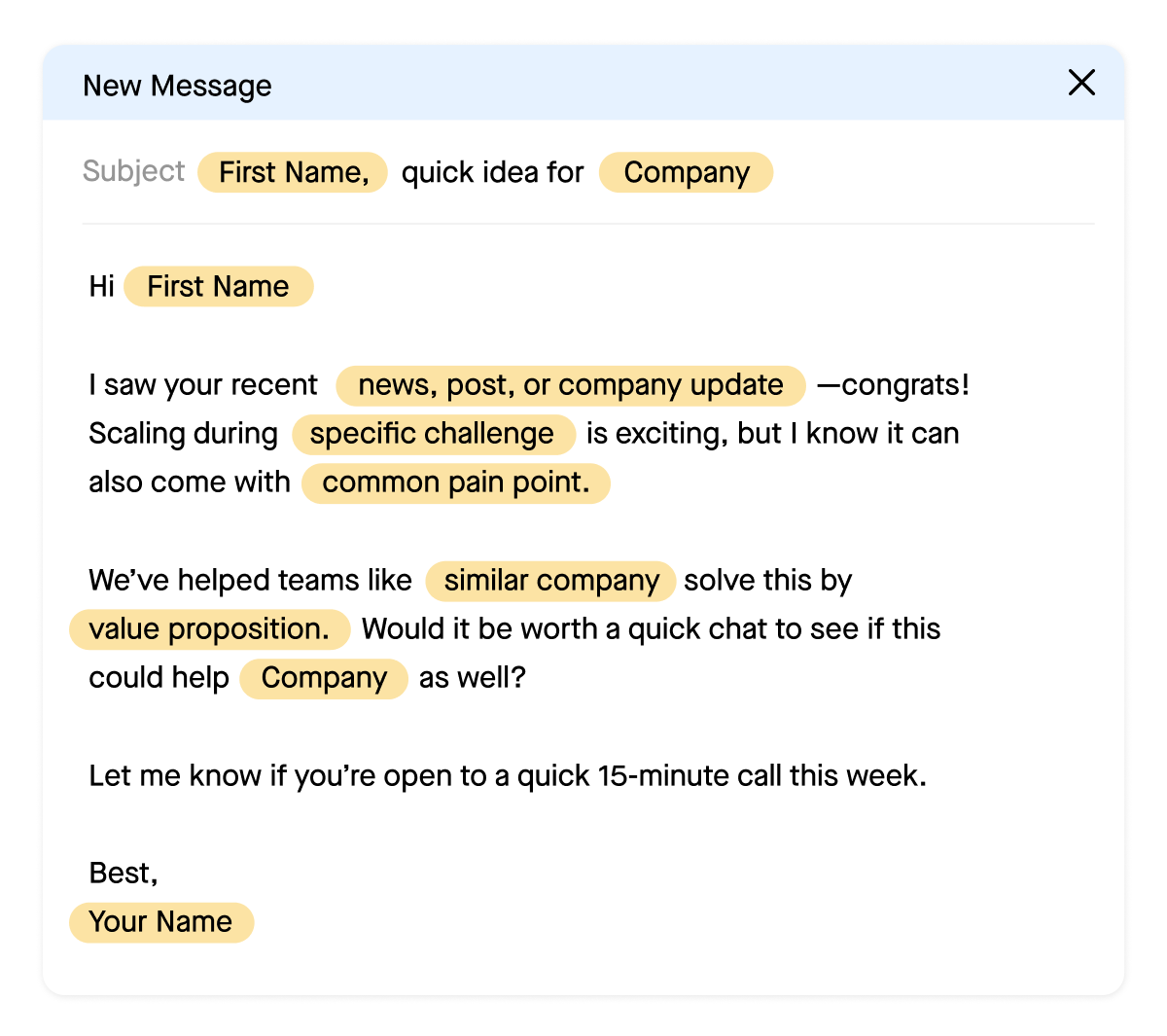Sales Development Representative (SDR) emails are crucial for initiating meaningful conversations with potential customers, driving lead generation, and nurturing prospects through the sales funnel. These emails serve as an important touchpoint, helping SDRs establish rapport, build credibility, and demonstrate value and authenticity through personalized messaging. Well-crafted SDR emails can significantly improve response rates, ensuring that prospects engage with the brand and move closer to a buying decision.
But too often, SDR outreach emails end up ignored because they feel templated, impersonal, or just too long. To break through the noise, your emails need to be short, engaging, and relevant. Let’s dive into the key elements that separate great emails from ones that get sent straight to the trash.
Before you hit send on your next sales email, ask yourself:
- Does the subject line spark curiosity?
- Did I personalize the first two lines?
- Did I keep it under 100 words?
- Did I include a clear CTA?
- Does it sound human (or too robotic)?
1. Craft a Subject Line That Sparks Curiosity
Your subject line is the first (and sometimes only) thing your prospect sees. If it doesn’t grab their attention, they’ll never open your email.
Example:
- Bad: "Increase Your Revenue with Our Solution!"
- Good: "[First Name], saw this and thought of you"
Keep it short, intriguing, and relevant to your recipient’s interests.
2. Personalize the First Two Lines
If the first thing your recipient reads is a generic pitch, they’ll hit delete. The opening lines should show that you’ve done your research and that this email is meant specifically for them.
Example:
- Bad: "I wanted to introduce myself and my company."
- Good: "Congrats on the recent [promotion/funding round]! Scaling a team during growth can be exciting (and a little chaotic)."
Personalization makes your email feel human rather than robotic.
3. Keep It Under 100 Words
Long emails don’t get read. Your prospect is busy—respect their time and get to the point quickly.
Example:
- Bad: (A 250-word block of text explaining your company’s entire value proposition.)
- Good: "I work with companies like [similar business] to solve [specific challenge]. If that’s something you’re thinking about, would love to chat!"
4. Include a Clear CTA (Call-to-Action)
Don’t leave your prospect guessing about what to do next. End with a clear and simple action step.
Example:
- Bad: "Let me know if you’d like to learn more."
- Good: "Are you available for a quick 15-minute chat this Thursday or Friday?"
5. Make It Sound Human (Not Robotic)
No one likes to read an email that sounds like a mass-produced script. Your tone should be natural, conversational, and easy to read.
Example:
- Bad: "Our innovative AI-powered solution leverages data-driven insights to optimize revenue performance."
- Good: "I came across your team’s work on [X] and had an idea on how we might help."
Example Email Template

By following this 5-point checklist, your outreach emails will be sharper, more engaging, and more likely to get a response. The goal isn’t just to send more emails—it’s to start real conversations. And that’s where real opportunities begin.
Ready to take your outreach to the next level? Explore how Groove by Clari can empower your team with AI-driven engagement tools designed to make every email count. Book a demo today!


